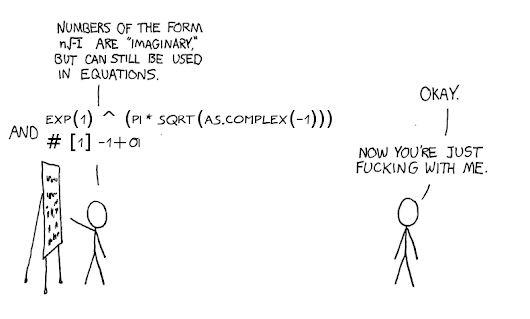
14 Jan The Power of Imaginary Numbers
(Thomas Howard, before his “lights out” in 1572)
1572 Medieval Europe was transitioning into the Renaissance and the Age of Discovery with a spectacular dash of theatrical mortality. The fourth Duke of York, Thomas Howard, is tried for treason in his plot to restore Catholicism in England and is hung from the neck. Netherlandish Calvinist rebels capture the port city of Brielle and the Sea Beggars capture the city of Gorkum and hung 19 imprisoned catholic priests.But little was known of Italian Rafael Bombelli hailing from Bologna, who at this time quietly set the stage for understanding the little understood algebraic “imaginary numbers” that later led to the development (for those that are interested) of the four-dimensional space of quaternion imaginaries and polynomial rings.
What is an imaginary number and why is it important in 2019, in relation to understanding business and banking relationships?
First, to quell the curiosity, an imaginary number is denoted by i, and is simply the seemingly impossible mathematical outcome of the square root of negative one (thus i square = -1).
In a practical sense it allows for complex problem solving in the fields of electrical engineering, quantum physics, economics and analysis.
 Drawing back to the key point, perhaps there is little correlation of imaginary numbers to business and banking dynamics (depending on what business you are in). But it does highlight that the analogy of “imaginary” numbers does exist in a world of big data and financial analysis. Once these hidden numbers are identified, extracted and quantified within a business, they can have an arterial benefit to improving financial outcomes.
Drawing back to the key point, perhaps there is little correlation of imaginary numbers to business and banking dynamics (depending on what business you are in). But it does highlight that the analogy of “imaginary” numbers does exist in a world of big data and financial analysis. Once these hidden numbers are identified, extracted and quantified within a business, they can have an arterial benefit to improving financial outcomes.
The Power of Imaginary Numbers within Business.
Thanks for staying with me on this topic.
I will now draw the analogy further in explaining that there is a certain power that can be drawn from numbers. We live and die by them. All our businesses are founded on them. We call upon experts to extract and explain these numbers. We then present our numbers to lenders who lean heavily upon them for comfort and release of capital to borrowers. They are our Salvis Gratia.
Every business has one characteristic in common. It is what I call the expense multiplier phenomena. Let us run with an example. A business has an expense ratio of 70%. That is, for a business to earn $100k, it incurs an expense of $70k to generate this income. So, if this company can save $1 of expense without impacting revenue, it is by comparison equivalent to earning an additional $1.43 in income.
On the flipside, for a company to earn additional income, the company must take on risk (economic, social and environmental) all of which incur an additional subjective cost that is difficult measure, but real non the less.
So, in this example, saving a $1 in expense has a POSITIVE multiplier impact equivalent to 1.43 times in income plus reduces the company’s need to additional risk exposure.
Banking and Business
Where is the connection to my business?
Financial leverage or debt capital can drive the growth of a business. But “debt” leverage comes at a real tangible cost. Given the nature of the equation above, would it not be in the company’s best interest to attain capital at the lowest possible cost (with all other characteristics of the loan being equal)? The multiplier impact of this directive is powerful.
By fault of human design, our psychology naturally falls upon top line performance. As it feeds into public ranking and headline reporting, it also feeds neatly into our alter egos. Turnover is sexy, expenses are not. A lot of decision making hence is focused on increasing revenue, not reducing costs.

So, let us flip this concept 180 degrees. When we demonstrate to our business clients that we have saved them $30,000 or $300,000 per annum in better loan pricing via restructuring, what we are saying is that we have effectively generated additional top line income of $42,900 or $429,000 per annum (on a 70% expense ratio) when converted back on the expense multiplier.
Now that is smart business, smart banking and it brings sexy back into expense analysis, is it not?



Sorry, the comment form is closed at this time.